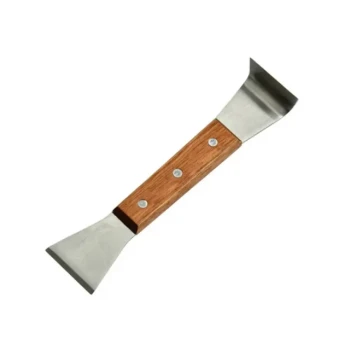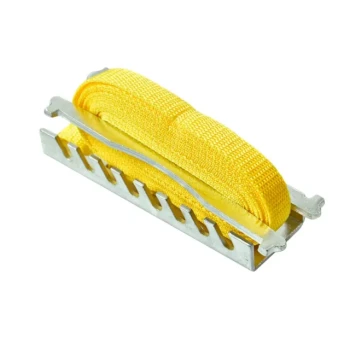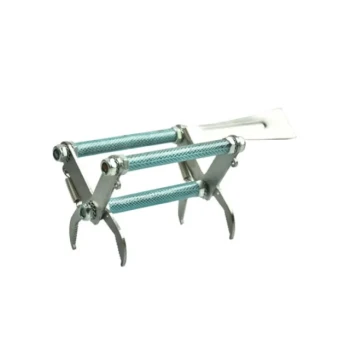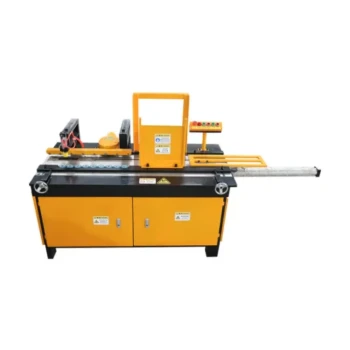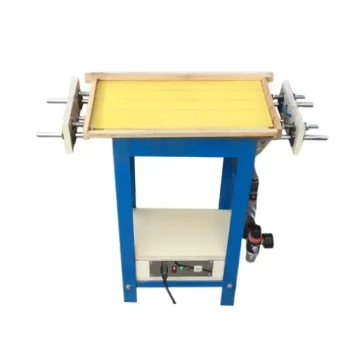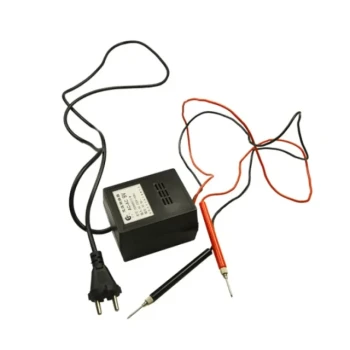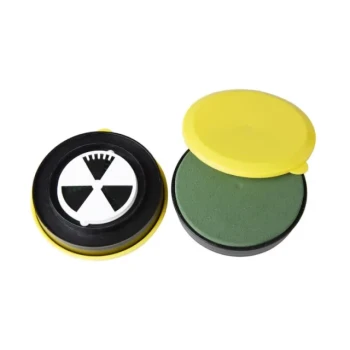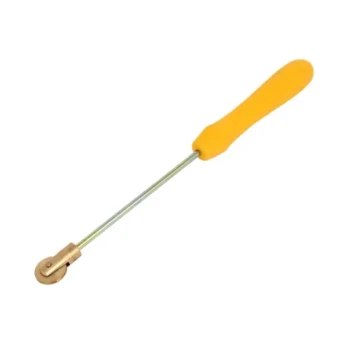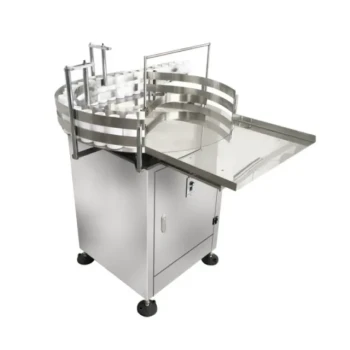The fundamental goal of winterizing a beehive is not to create a warm space, but a dry one. While insulation and windbreaks are important, the two greatest threats to a colony's survival are starvation and moisture. Proper preparation focuses on ensuring ample food stores and providing critical ventilation to prevent deadly condensation from forming inside the hive.
The most common mistake is sealing a hive too tightly in an attempt to keep it warm. A cold, dry colony will survive, but a damp colony—even a mild one—will perish. Your primary job is to manage moisture and ensure access to food.
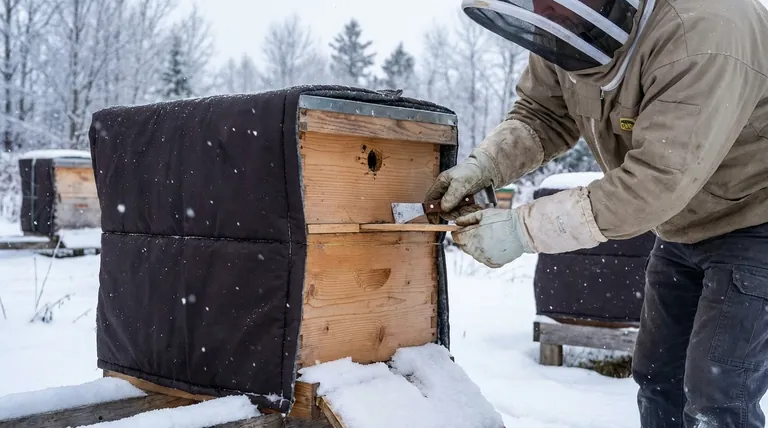
The Foundation: Pre-Winter Colony Health
Before you even think about wraps or ventilation, the survival of your hive depends on the health of the colony going into the fall. A strong, populous, and disease-free colony is the best defense against winter.
Why Fall Health is Critical
A winter cluster is composed of "winter bees," which are physiologically different from summer bees and are born in the fall. A strong fall nectar flow and a healthy queen are essential for raising a large population of these long-lived bees.
Varroa Mite Management is Non-Negotiable
Varroa mites weaken bees and transmit viruses, devastating a colony's health. Perform a mite count in the late summer or early fall and treat accordingly. Sending a colony into winter with a high mite load is a primary cause of collapse.
Mastering the Two Pillars: Food and Moisture
If you focus on only two things, make them these. Getting food and moisture management right accounts for the vast majority of winter survival success.
Ensuring Adequate Food Stores
Starvation is a leading, and entirely preventable, cause of colony death. Bees generate heat by consuming honey; without fuel, their cluster cannot maintain its temperature.
After your final honey harvest, assess the hive's weight. If it feels light, you must feed them a 2:1 sugar-to-water syrup. It's also wise to consolidate all honey frames together so the bees don't have to cross empty frames in the cold to reach their food source.
Why Moisture is More Dangerous Than Cold
A cluster of bees generates significant heat and water vapor through respiration. In a poorly ventilated hive, this warm, moist air rises, hits the cold inner cover, and condenses. This icy water then drips back down onto the cluster, chilling the bees and leading to death.
Creating Critical Top Ventilation
You must provide a way for this moist air to escape. Never seal the top of the hive completely.
A simple method is to place a small shim, like a popsicle stick, under each corner of the inner cover to create a small ventilation gap. A more advanced option is a "quilt box," which uses wood shavings to absorb moisture while allowing air to escape. An upper entrance hole also provides an essential exit for both moisture and for bees on rare, warm winter days.
Understanding Insulation and Wrapping
Wrapping a hive is primarily about reducing wind exposure, which can rapidly strip heat from the hive. It is a secondary concern to food and moisture.
The Goal: Wind Reduction, Not Heat Generation
Bees do not heat the entire hive cavity; they heat their cluster. Your goal is to provide a windbreak that protects this micro-climate. The black color of typical hive wraps can also absorb solar radiation on sunny days, providing a small amount of passive heat.
How to Properly Wrap a Hive
The best time to wrap is in late fall, after the bees have begun to cluster but before the first hard freeze. Use a commercial hive wrap or black roofing felt, securing it firmly with staples or tape so it can withstand winter storms.
Maintaining Hive Access
Crucially, do not block any entrances with the wrap. The main bottom entrance should remain clear for air intake, and an upper entrance is vital for ventilation and for bees to take brief "cleansing flights" to defecate outside the hive.
Winter Monitoring: A Hands-Off Approach
For the most part, you should leave your hives alone during the coldest months. Opening the hive breaks the propolis seals they've created and can fatally chill the colony.
What to Check For
On a calm day, you can briefly check for two things. First, ensure entrances are clear of snow and debris. Second, look at the upper entrance; if you see moisture or frost, your ventilation may be inadequate. On a mild day, you can quickly lift the hive from the back to gauge its weight and remaining food stores.
When to Remove Wraps
Once the weather consistently stays above freezing and the bees are actively flying and bringing in pollen from early spring blooms, it is time to remove the wraps. Leaving them on too long can cause the hive to overheat.
Making the Right Choice for Your Goal
Winterization is not a one-size-fits-all process. Your actions should be guided by your climate and your colony's specific condition.
- If you live in a mild winter climate: Focus primarily on ensuring the hive is protected from wind and rain and has more than enough food to last until spring.
- If you live in a cold, snowy climate: Prioritize top ventilation to manage moisture, use a wrap to block wind, and ensure all entrances remain clear of snow.
- If your colony seems weak going into fall: Your most critical action is immediate varroa mite treatment and aggressive supplemental feeding to build a strong winter bee population.
A well-prepared hive gives your colony the best possible chance to emerge strong and ready for spring.
Summary Table:
| Key Winterization Focus | Critical Action | Why It's Important |
|---|---|---|
| Moisture Management | Provide top ventilation (e.g., shim under inner cover) | Prevents deadly condensation from dripping onto the bee cluster |
| Food Supply | Assess hive weight & feed 2:1 sugar syrup if light | Prevents starvation; bees need fuel to generate heat |
| Fall Health | Perform varroa mite count & treat in late summer | Strong, disease-free winter bees are essential for survival |
| Wind Protection | Wrap hive with black felt/wrap (do not block entrances) | Reduces wind chill without overheating; secondary to moisture control |
Equip Your Apiary for Winter Success with HONESTBEE
Preparing your beehives for winter is a critical task that requires the right supplies and equipment. At HONESTBEE, we specialize in providing commercial apiaries and beekeeping equipment distributors with high-quality, wholesale-focused beekeeping solutions designed for durability and performance in harsh conditions.
We understand the challenges you face—from ensuring proper ventilation with inner covers and quilt boxes to securing hive wraps that withstand winter storms. Our product range is built to help you effectively manage moisture, protect against wind, and support strong colony health from fall through spring.
Let us help you safeguard your investment and ensure your colonies thrive.
Contact HONESTBEE today to discuss your wholesale needs and discover how our equipment can support your winterization strategy.
Visual Guide

Related Products
- Professional Dual-End Stainless Steel Hive Tool for Beekeeping
- Professional Galvanized Hive Strap with Secure Locking Buckle for Beekeeping
- No Grafting Queen Rearing Kit: System for Royal Jelly Production and Queen Rearing
- Professional 3-Bar Frame Grip with Integrated Hive Tool
- Beehive Handle and Frame Rest Cutting Machine: Your Specialized Hive Machine
People Also Ask
- What is a hive tool used for in beekeeping? Your Essential Guide to Hive Management
- What is the hive tool used for? The Essential Multi-Tool for Every Beekeeper
- What are the basic tools for beekeeping? Essential Starter Kit for Safe & Successful Hive Management
- What is a hive tool and what are its uses? Master Your Hive Inspections with the Essential Beekeeper's Tool
- What should beginners consider when purchasing beekeeping equipment? A Guide to Essential Starter Gear
